The Ultimate 4 Day Iceland Itinerary

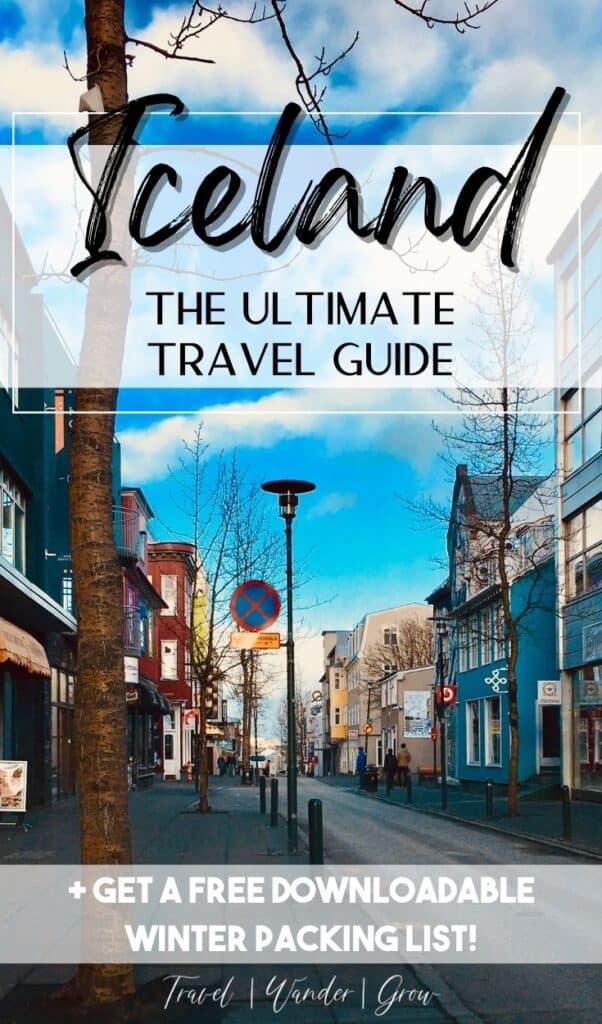
Not too long ago, I had the pleasure of traveling to Iceland in winter. I can honestly say Iceland is one of the most beautiful and other-worldly countries that I have ever visited. Given the cold weather and the presence of volcanoes, it is literally a Land of Fire and Ice. My personal point of view is that the best time of year to visit Iceland is during the winter, when you can see the Northern Lights and lovely snowscapes. In this post I will walk you through a 4 day Iceland itinerary for a winter visit to the country. Taking a long weekend to Iceland is a relatively short time, in an island full of so many things to do/see, but is enough time to see many of the major attractions. Stay tuned for a detailed gravel guide on how to see Iceland’s natural wonders and tips to make your experience there a great one.
A Brief History | Iceland
Compared to most places in the world, the history of Iceland as an inhabited country is relatively recent. There is no evidence of anyone living there before the 700s AD. In 870, the first to circumnavigate the island there was Viking explorer Garðar Svavarsson. One of his men, Náttfari, stayed back on the island with two slaves and they became the first permanent island residents in that same year. After this, many emigrants started to come to island – mostly Scandinavians and there Irish or Scottish slaves and servants.
By 930 AD, most of the farmable land had been claimed and the Icelandic Commonwealth was established. Note, this was because there wasn’t very much farmable land. And this fact led the settlement of Greenland as well. Additionally, around this time, 25% of the land was covered with forest, but due to deforestation, this has decreased to just 1% in the present day. The religion of Iceland began with alignment to Norse mythology, but the country as a whole was converted to Christianity around 1000 AD. I should note, that this did not take hold for all however.
The original Parliament / Icelandic Commonwealth eventually fell in 1262, as there were ongoing conflicts with the powerful Icelandic chieftains. After several battles, the Icelandic Commonwealth ended and the Old Covenant was signed. This brought Iceland under the Norwegian crown that year, and then the Kalmar Union in 1415 when Norway, Denmark, and Sweden were united. It was also around this time that the Black Death swept through the island twice, both in 1402 and then again in 1494.
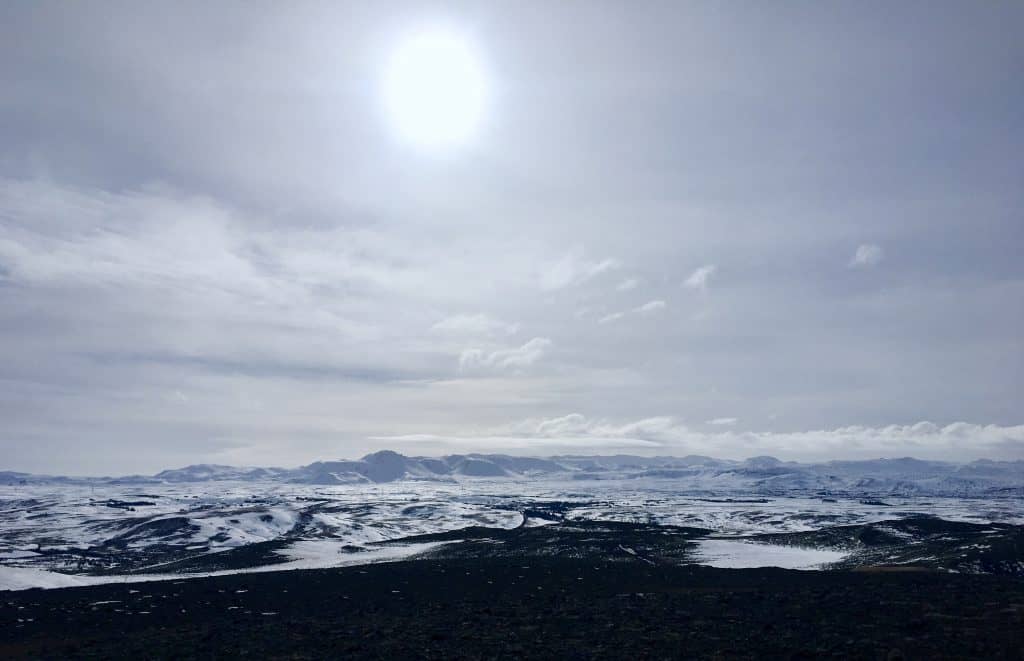
At the time of the Reformation, Lutheranism was heavenly imposted on Iceland by King Christian III of Denmark. Jón Arason was beheaded in 1550 with two of his sons, and then the island officially became Lutheran.
From the 1600s to the 1700s, Iceland was negatively impacted by Danish laws that forced them to only trade with Denmark. The island entered a period of decline, also being impacted by a smallpox epidemic in 1707, eruption of the Laki volcano in 1783, and subsequent famine. After the Napoleonic Wars in 1814, Denmark-Norway broke up, which led to a a rise in Icelandic nationalism. This was after a large percentage of the population fled to what is now Canada as the island entered a period of more extreme cold. Finally in 1918, with the Danish-Icelandic Act of Union, Iceland officially became a sovereign and independent country.
Iceland became a republic in 1944 after the Union expired, and officially became a member of NATO in 1949. There were a number of riots and protests for a time due to the “overstay” of US soldiers after the end of World War II. The last of these trips officially left at the end of September in 2006. Like many countries, Iceland was hit hard by financial crisis from 2008-2011. But since economic stabilization in 2012, Iceland has grown to be a major tourist destination.
Know Before You Go | Iceland
Lodging + Logistics
Getting There: Iceland’s largest island is the Keflavik International Airport (KEF), and where hub for international travel. It is a beautiful and modern airport, and relatively easy to navigate. There are a variety of flight options both from the national Icelandair and many other international airlines, and it is not too hard to find affordable flight options. And if you do fly Icelandair, it is possible to make a stopover in the country on the way to other European cities when booking directly with them.
Getting Around: Iceland does not have Uber, but there are several ways to get around the island. If you are sticking to just the agenda in this itinerary, you can use the bus transportation provided with your tours for the most part. The next option is to consider a car rental. I’ll note, car rentals can be a bit expensive, and driving conditions can be rough. I rented a car while there and ultimately regretted it. But if you enjoy driving and feel comfortable driving in snow or very bumpy roads, this could be a good option. If you plan to travel across the island, you can travel via air to the domestic airports as well.
Where to Stay: Reykjavik is not a very huge city, but I do recommend that you stay as close to the center as possible. Hotels can be pricey, but the options provide provide a good range for you to select from based on budget. This will allow you to explore downtown without a car and not have to worry about parking, whether you do or do not have rental. Here are a few ideas for your stay:
Exeter Hotel: This hotel is right in the city center, and close to Old Harbor area. It has a modern feel and a “Scandi” style in terms of decor. A great option if you want a small taste of what local life is like in Iceland.
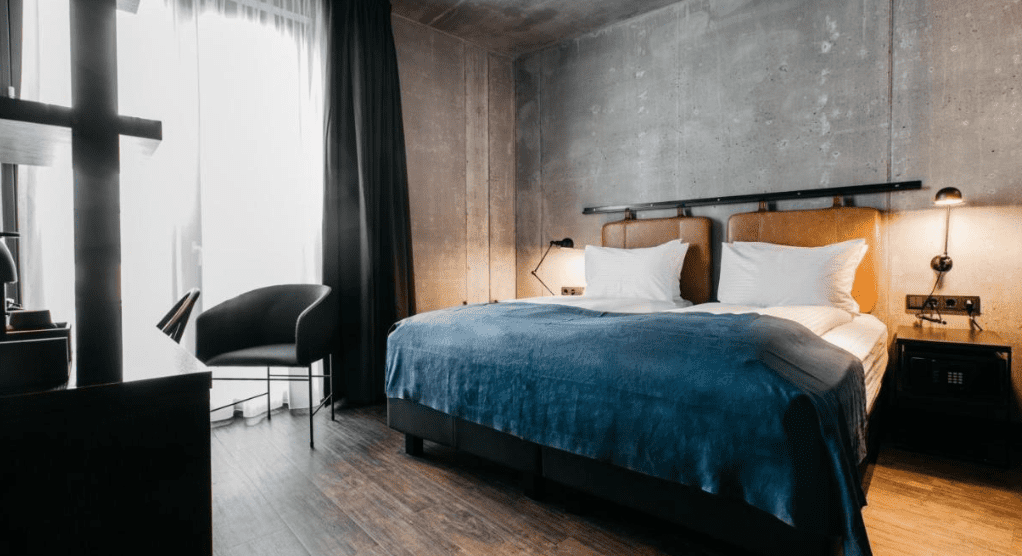
City Center Hotel: This hotel is in an excellent location – it’s just a few steps away from the well-known Hallgrímskirkja Church, and very walkable to all the city’s attractions.
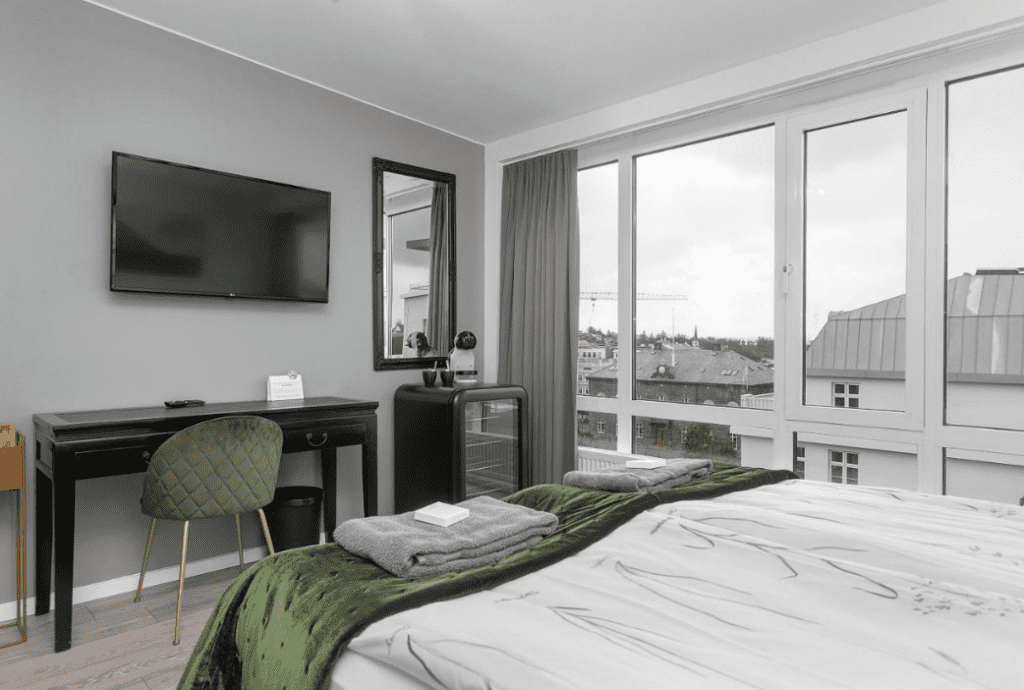
Kex Hostel: If hostels are more of your style and better for your budget, this will be an excellent option for you. It is also in a very walkable part of the city near the Harpa Concert Hall. There is a communal kitchen, buffet breakfast, and an onsite restaurant and bar.
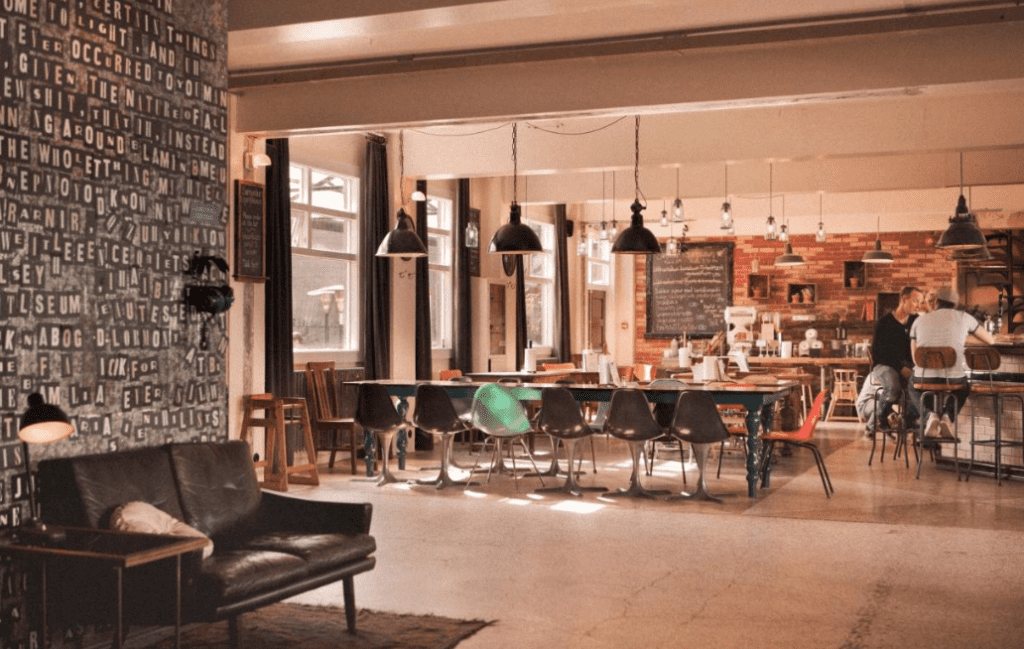
Marina Apartment: We stayed at this very cute AirBnB while there, which only cost us about $120 USD/night. It was in a great location – just a short walk to downtown. It was only about 7 minutes! I recommend staying at or very near to downtown while in Iceland if you are visiting for a short time to avoid spending too much time traveling.
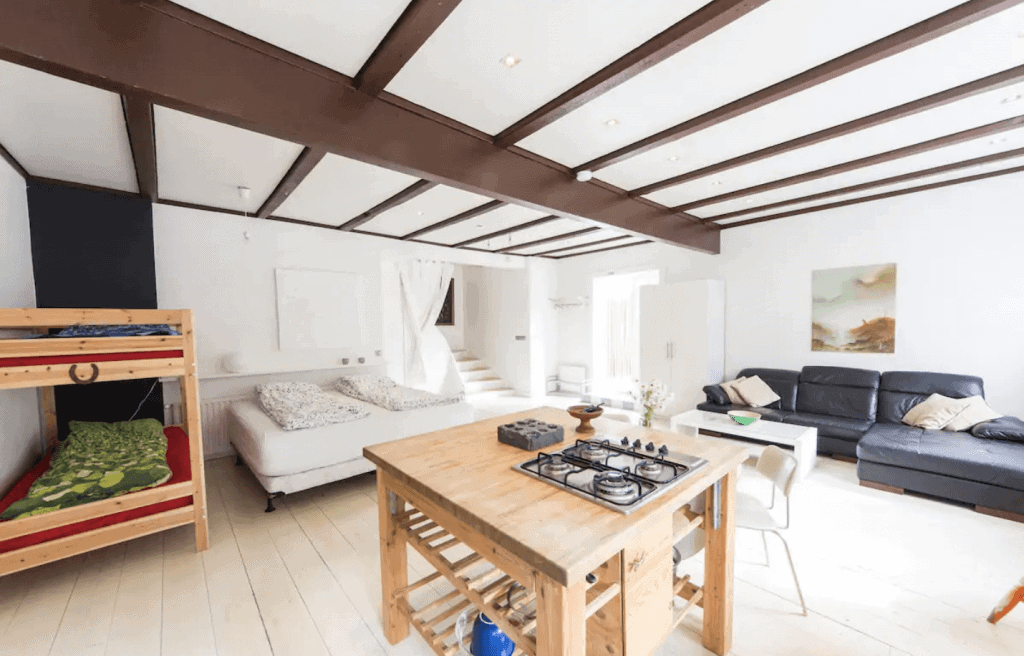
Daily Considerations
Currency Situation: The currency used in Iceland is the Króna, and as of the time of writing this post, the current exchange rate was 1 USD = 141.92 ISK. You can get the latest exchange rate here. Know that your credit card will be widely accepted here, and you don’t actually need to take out a lot of cash, except for tipping. However if you dont, be sure to carry a credit card that does not include international fees.
Language Considerations: The language spoken in Iceland is Icelandic. This is a North Germanic language that is most closely related to the ancient language of the Vikings. In fact, outside of some new vocabulary additions, the language has evolved very little since the 11th century. You should know that English is very widely spoken in Iceland – some even sound like they speak perfect American English. You should not have any problems speaking with anyone, but it doesn’t help to learn a few greetings to show respect for their culture.
When to Go: Iceland is one place where I think a visit at any time of year is warranted. There are a few things you should know though to help you plan:
- Weather: Iceland was not as cold as I thought it was going to be, with temperatures in the mid-30s (F) during the day and the mid-20s (F) during the evening in March. These temperatures are pretty consistent for the majority of winter in Iceland. For those of you living in the mid-west or north-east of the US, these temperatures are actually not too bad :). What will get you is the wind chill, which can be brutal, so pack appropriately. But please don’t let the cold weather scare you – there are plenty of chances to warm up, and if you dress appropriately, you will have little to worry about.
- Sunset/Sunrise Time: During the winter months towards the end of December / beginning of January, there are points in time when the sun does not rise at all. Keep this in mind as you select the month you travel to Iceland. I traveled there in March, and the days were already back to a normal length (sunrise ~7AM and sunset ~8PM), and was still able to see the Northern Lights. It is completely different in the summer, where you’ll experience the midnight sun phenomenon if you are there close to the summer solstice.
Where to Eat: We ate like royalty the whole time we were in Iceland – it seems that almost every restaurant is nearly Michelin-star quality. The downside to this is that the food is also pretty expensive. It cost us about $70 USD for dinner, on average. If you are on a budget, check out the Bonus grocery store, which has great prices. Here you can pick up the essentials and make your own food, saving quite a bit of money in the process.
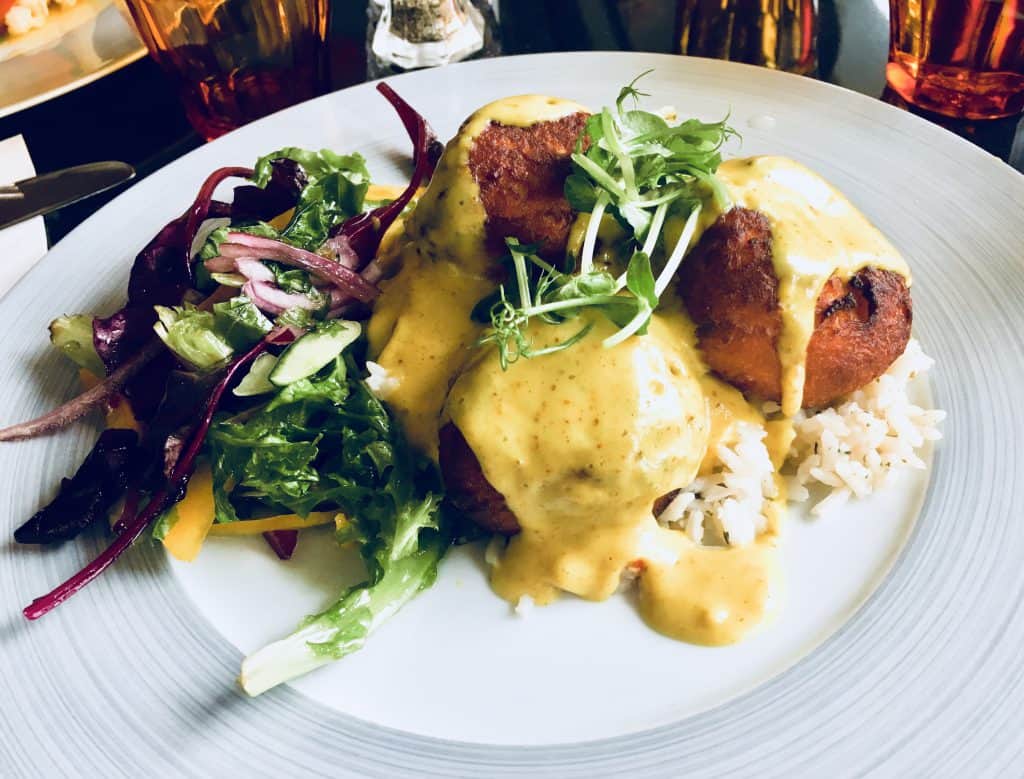
For those of you interested in checking out a few restaurants, here are a few options that we enjoyed:
- Forétta Barrin – The “Smokey Bay” 4-course set menu is delicious!
- Tapas Barrin – Spanish Restaurant with an Icelandic flair
- Coocoo’s Nest – This place offers very hearty dishes in a place that has that hipster vibe
- Geysir Bistro – Restaurant that has really great seafood options (note this restaurant has now closed)
What to Pack: There are a few considerations to keep in mind when packing for a trip to Iceland in Winter. Visit my post Packing for Iceland in March for a complete packing list!
The Itinerary | The Best Things to Do in Iceland in Winter
Day 1 | Exploring Reykjavik and Viewing the Northern Lights
Morning
One of the best ways to get yourself acclimated to a new city (especially one in a new country) is to take a walking tour. I recommend that this is how you start your first day in Iceland. The Reykjavik City Walking Tour is a great option to do this, and will take you to the following sites around the center of the city:
- Hallgrímskirkja Church: This Lutheran Church stands at 244ft tall and is the largest church in the country. It has been an important part of the country’s national identity since it was built in 1986. It is located on the top of the Skólavörðuholt hill and is since visible to throughout the country. The church is built in the expressionist style, and is known for having a distinct curved spire and side wings.
- Harpa Concert Hall: This is a relatively new concert hall and conference center that was just recently completed in 2011. It is a beautiful glass structure that features geometric glass panels in all different colors. Before the 2008 financial crisis, this building was intended to be their World Trade Center, but was repurposed as a concert hall once the government opted to fund the completion of the building.
- Laugavegur (Main Street): This is the main street for shopping in Reykjavík, and is known for the wide variety of museums, boutiques, restaurants, and bars found there. It is one of the oldest streets in the city, and its name translates to “the Water Road”, more or less. Once upon a time, it is where women brought their laundry to wash in the hot pools found there. After the tour, you may want to return here to visit the famous Phallological Museum and the Punk Museum.
- Skólavörðustígur: This pedestrian street is another that has many things to do, such as souvenir shops, cozy cafes, and vintage stores. It starts off of the Laugavegur Street and leads back up to the church (if travelled in entirety). The street is known for being partially covered with a painted rainbow, and therefore is a great place for a nice photo opp as well.
- Alþingi Parliament Building: This building, pronounced Althingi in English), was built in 1881 and is now one of the oldest stone buildings in the country. Previously this building housed the Icelandic National Library and was used partially by the University of Iceland. It was also where the President had his office until 1973. However, today it is simply used as offices for Parliament.
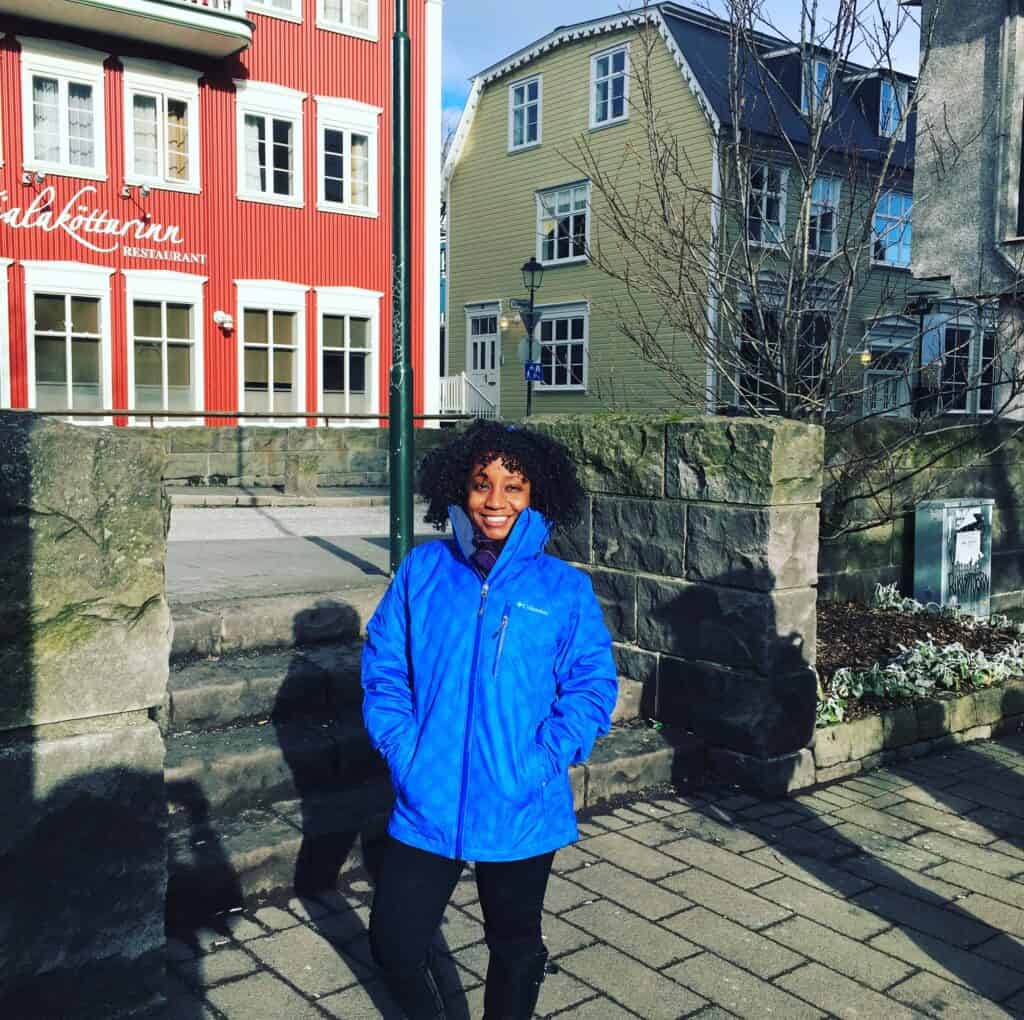
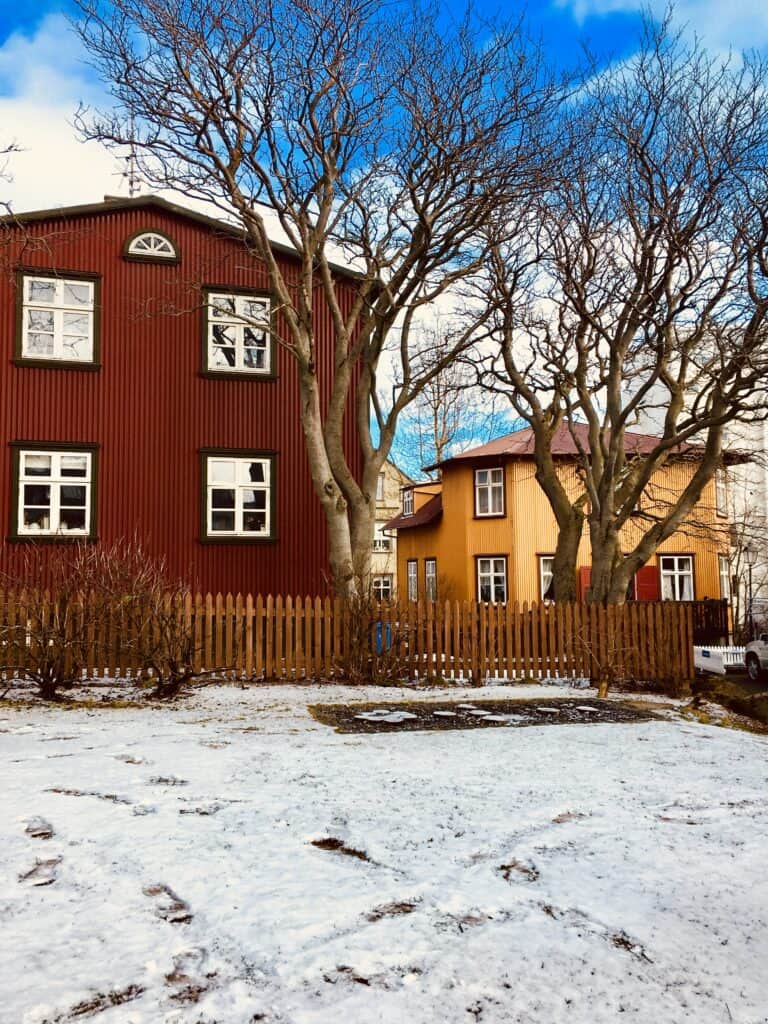
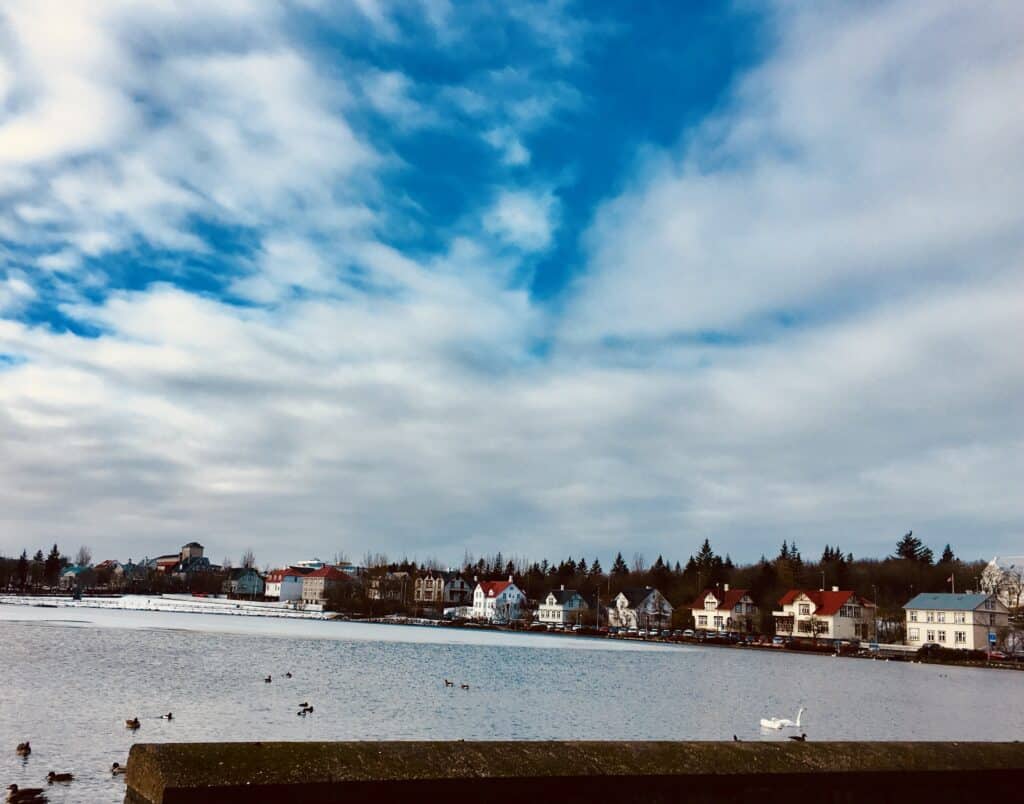
Book your Iceland Walking Tour Here!
If you have less time, and don’t mind going a little less in-depth, consider a free walking tour. I like to take these from time to time, as the tour guides have the incentive to provide a great experience since the price for these tours is tip-based. We took the Free Walking Tour Reykjavik (History and Culture Walk) on my first day in Iceland. The tour guide was a lot of fun and provided us with interesting information on the past and the present of Iceland. This tour will take you to many of the major landmarks in the city as well.
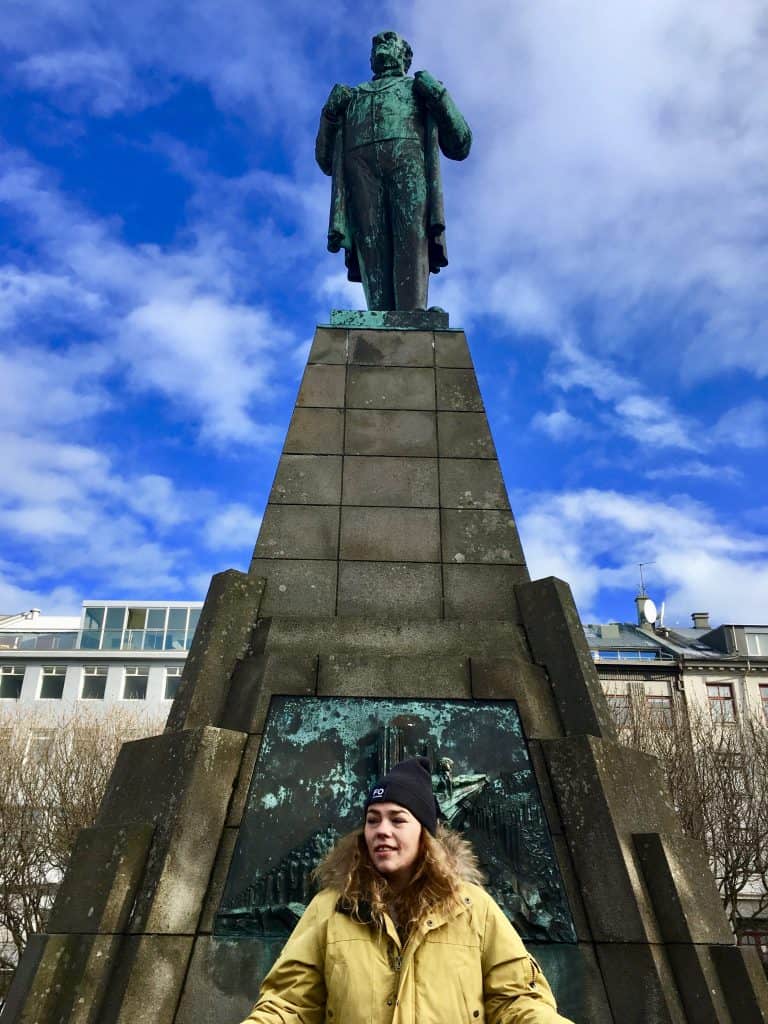
Reykjavik has a very walkable downtown area and we had no problems getting around after the tour. If you do take this tour on your visit, don’t forget to bring cash and tip generously if you enjoy it!
Afternoon / Evening
After getting some rest, I recommend taking a Northern Lights Tour. This tour is one of the best reasons why you should travel to Iceland in winter is to see the aurora borealis, also known as the Northern Lights. If you are not aware, this is a natural phenomenon that allows you to see wispy colors in the sky. It is truly magical. The tour will start by picking you up from your hotel and taking you a “hunt” for the Northern Lights. The lights do not show up every night as their visibility depends on the size of the “storm”, meaning how many electrically charged solar particles that reach Earth’s magnetic field. A cloudy sky will also inhibit visibility as well.
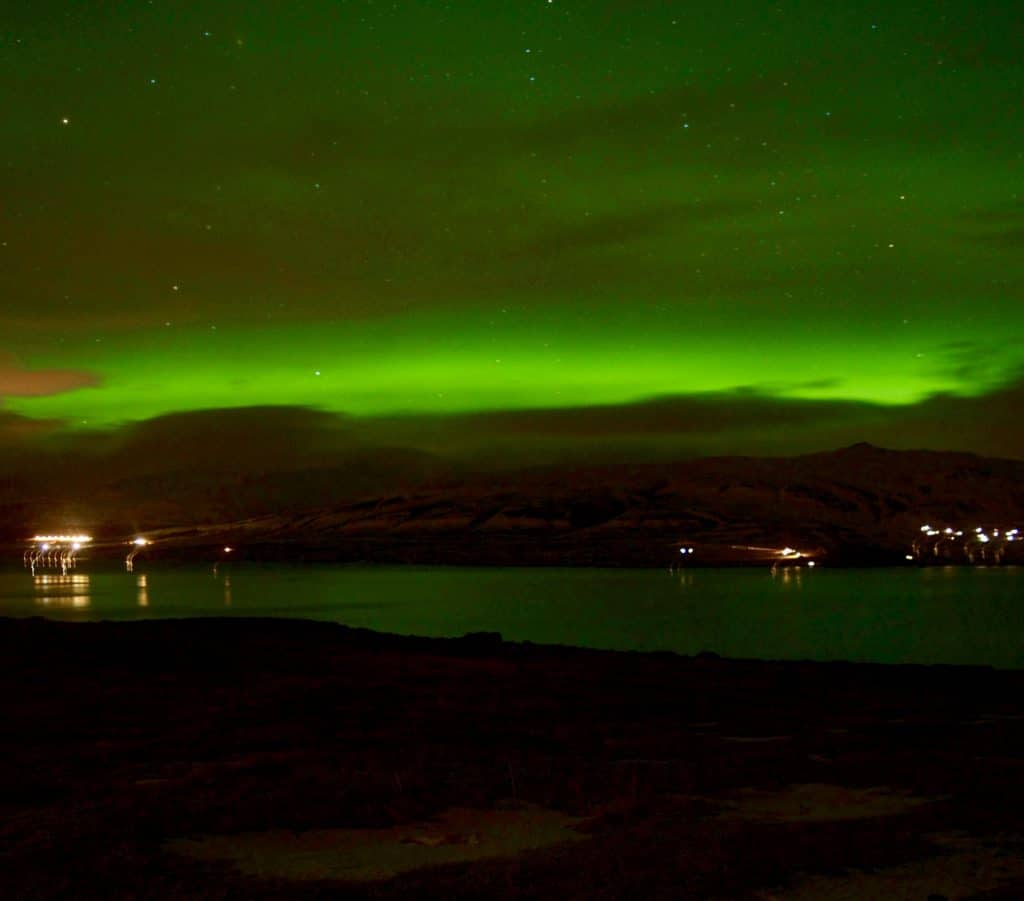
Given the unknown nature of it all, most tours will offer another excursion for free if the lights don’t make an appearance the evening of your tour. And they will also let you know in advance if the night is a “no-go” from the start. We didn’t see a major Northern Lights “storm” while there, but were still able to see them before the clouds rolled in and captured some cool shots.
Note: I do not recommend trying to go on a hunt by yourself if you have rented a car given how dark the roads are at night and how far from the city you have to travel at times to find them.
Book you Northern Lights Experience now!
Day 2 | The Golden Circle
Morning – Afternoon
On your second day in Iceland, I recommend you get out and experience Iceland’s “Golden Circle”. Our Golden Circle Tour was probably one of my favorite parts of our quick trip to Iceland, despite the high number of tourists you can expect to see on this excursion. For those of you who are new to this term, the Golden Circle refers to a tourist route where one will visit the four following natural wonders:
Kerid Crater: This volcanic crater was formed at the eons old explosion of the volcano that essentially “blew it’s top”. In the center of the crater you’ll now find Kerið Lake and slopes that are covered in a vivid red color. The lake fluctuates between seven and fourteen meters deep, and can completely freeze over in the winter (as you’ll see in my pictures below).
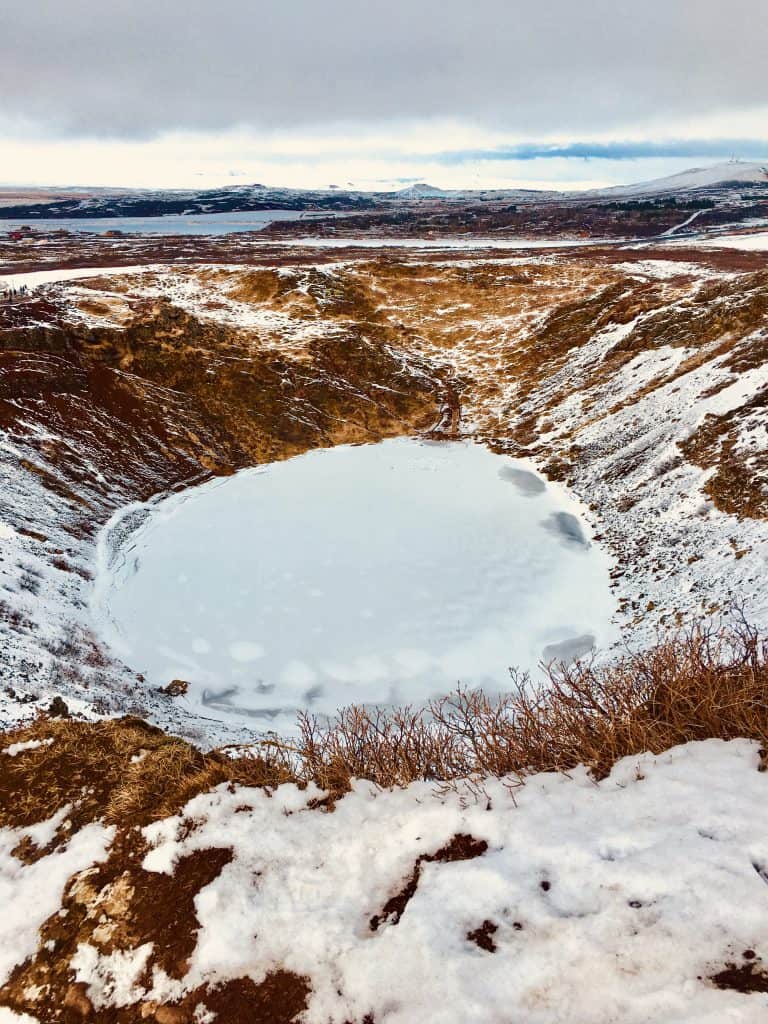
Gullfoss Waterfall: The name of this waterfall translates to “Golden Falls”, and is one of the most iconic of Iceland’s many waterfalls. It has a shorter cascade of 36 feet tall and a second one that is 69 feet tall. And the canyon around the waterfall reaches a height of 230 feet. The amount of water that pours from the falls does decrease in the winter, but still travels at a very rapid speed. All this to say is, don’t stand too closely if you do not want to get wet. In my opinion, this is the absolute best part of the Golden Circle – it is completely breathtaking.
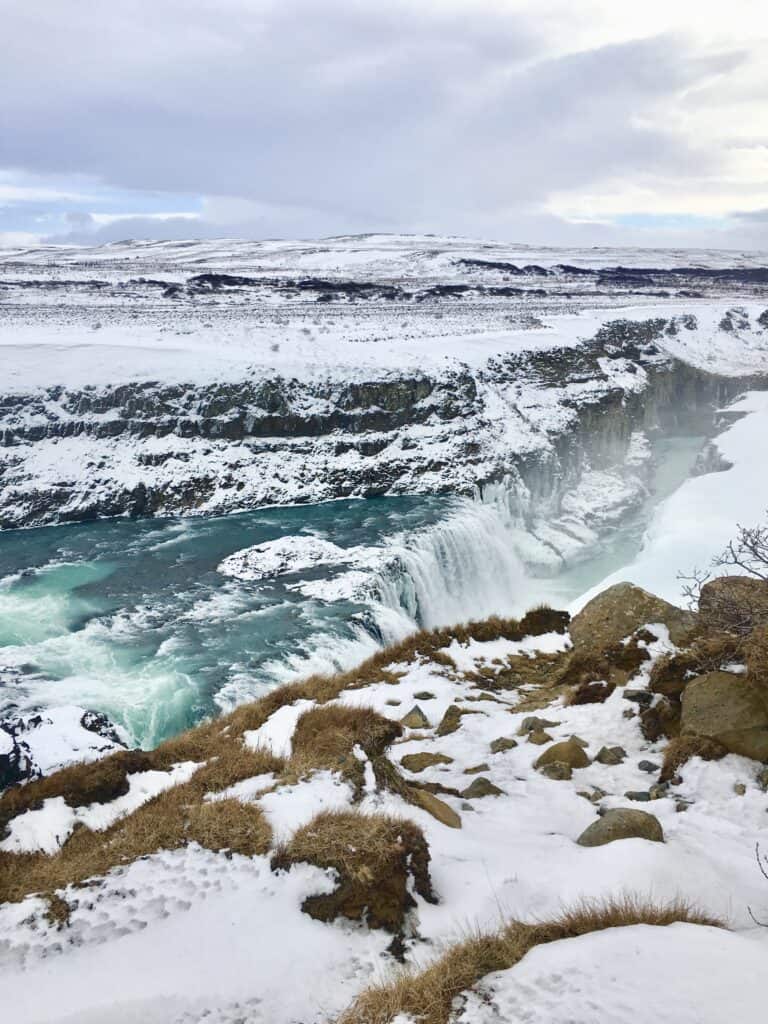

Geysir Geothermal Area: This area is sometimes known as the Great Geysir, and because it was the first one to be featured in print in Europe, it is where the English word geyser is derived from. When it is operating, Geysir produces powerful blasts that spew air up to 230 feet in the air. Nearby there is also another geyser named Strokkur, that erupts up to 98 feet that goes off every few minutes. You are more likely to experience the latter while in the area than the former due to geological changes. Both geysers are located in Haukadalur, and there are a number of heated pools on the site as well. Quick Tip: There is a large visitor center with a cafeteria-style restaurant and souvenir shop at the Geysir stop. This means you don’t need to bring your own food along with you, unless that’s your preference.
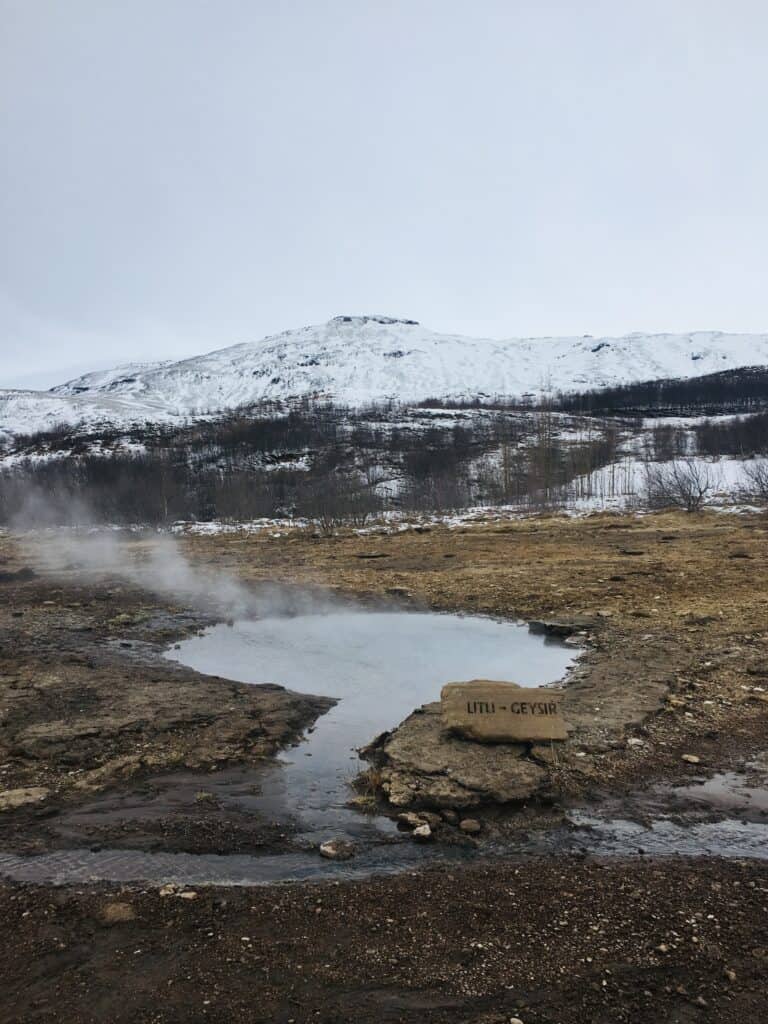
Thingvellir National Park: This park, properly written Þingvellir in Iceland, is a UNESCO World Heritage Site where the North American and Eurasian tectonic plates meet. Also known as the Mid-Atlantic Ridge. What is very cool to see is is that you can clearly see the continental drift between these plates in the cracks and faults found here. The largest of these is known as Almannagjá, which is essentially a canyon. Another interesting fact about this park is that it is the site of the first parliament site in Iceland, which is why it became a national park in 1928.
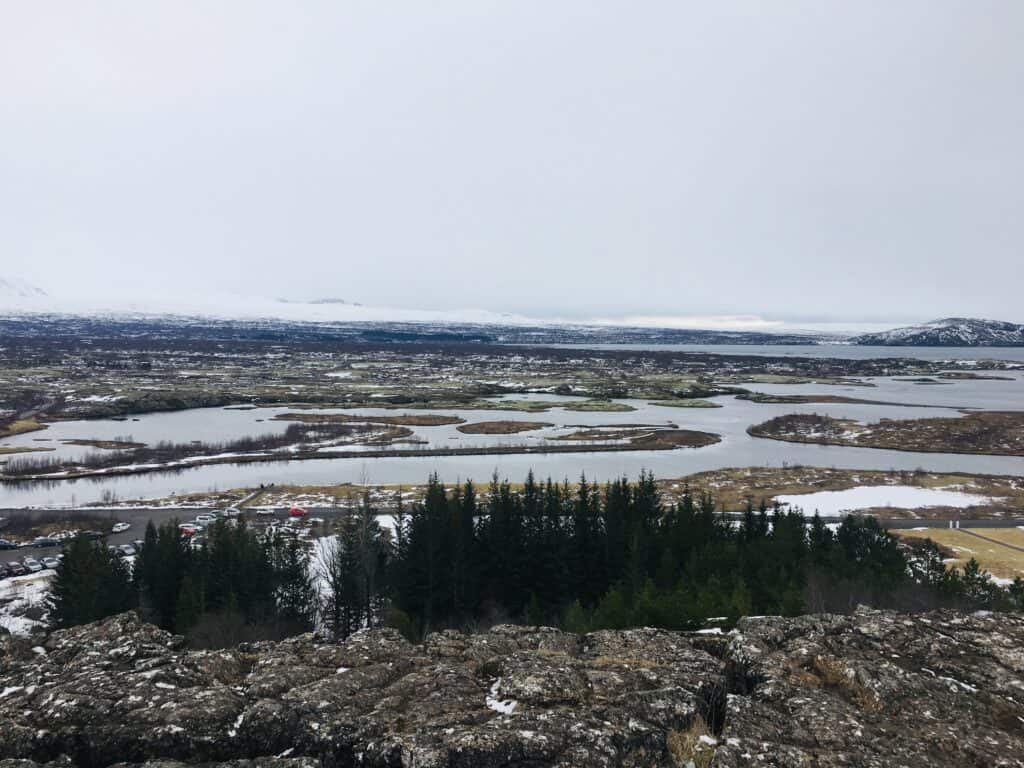
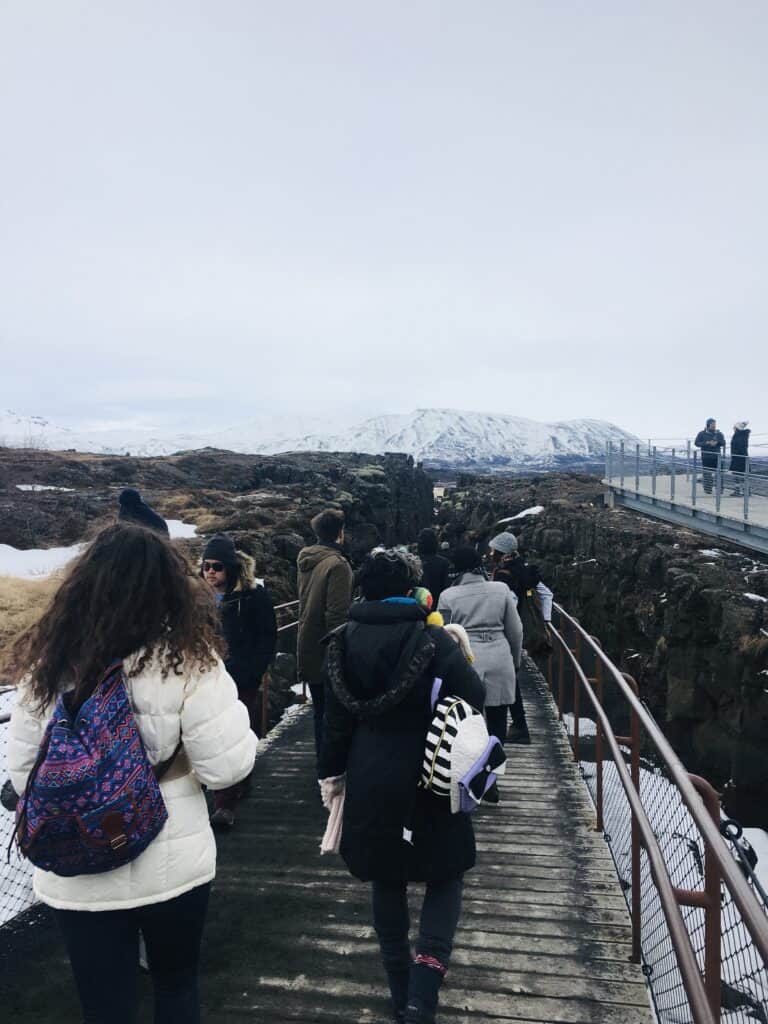
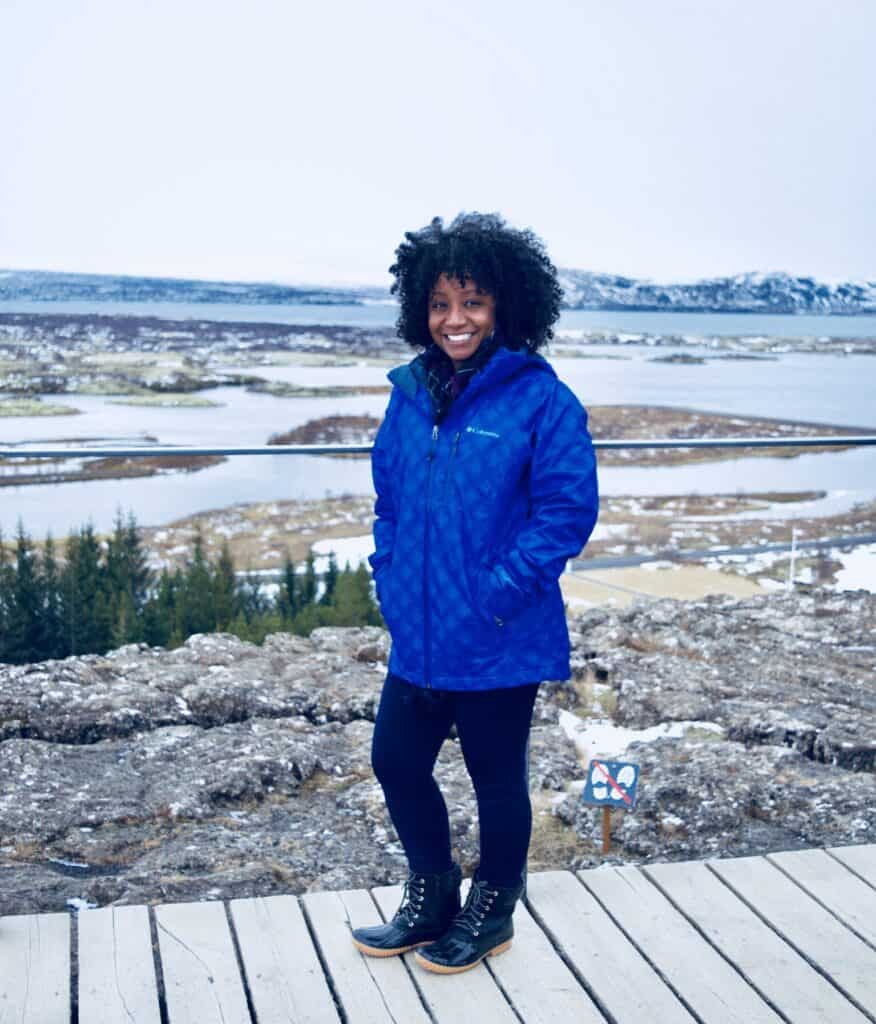
Throughout the tour you’ll be able to see the Icelandic countryside, with stellar views of the otherworldly landscape here and a chance to view the famously hairy Icelandic horses.
Book your Golden Circle Afternoon Tour here!
Note, if you don’t have time for the full-day tour, you can take the “Golden Circle Afternoon” tour. The primary difference between this one and the longer tour is that it just allows for shortened time at each stop.
If you opt to drive instead, you can certainly make this a self-drive tour, and just follow the map to each destination.
Day 3 | ATV Tour and the Blue Lagoon
Morning
For those of you who are a bit more adventurous, I recommend checking out an ATV tour. We took this Mountain Safari Tour that provided us with amazing shots of Reykjavik while we ventured up the Hafrafell Mountain Summit. All ATV gear was provided, such as a visor and lined ATV suit. In addition, the ATVs even come with heated handlebars! This tour is meant for beginners, so you will not travel on roads that are too dangerous. On the way up the mountain summit you’ll pass by Lake Hafravatn and reach the pinnacle of the tour with breathtaking views of Reykjavík.
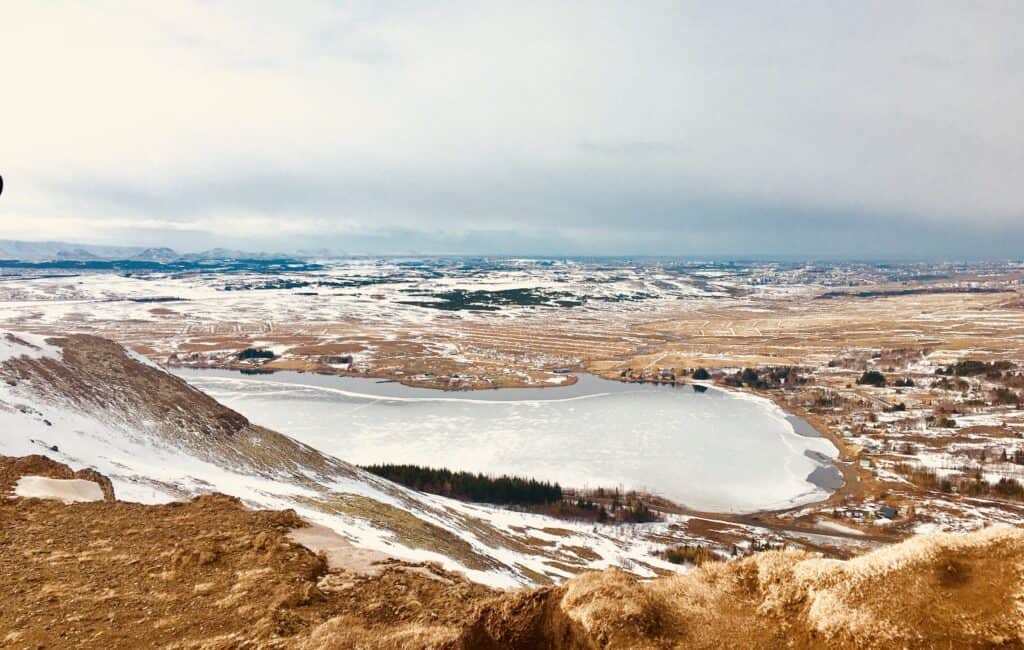
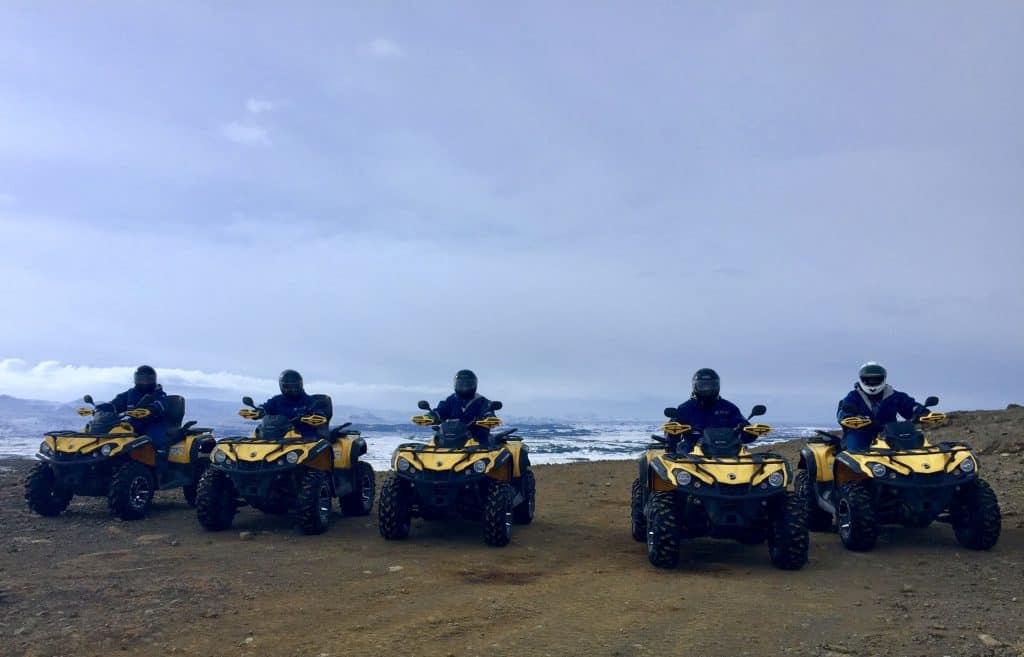
Afternoon
After your ATV tour, use the afternoon / evening to take some time to relax in one of Iceland’s famous hot springs – The Blue Lagoon. Just in case you are not aware, the Blue Lagoon is a geothermal spa located in the southwestern part of the island. It is about a 40 minute drive from Reykjavík, and is one of Iceland’s most popular attractions. The lagoon is actually manmade, and was founded accidentally when the runoff from a new geothermal power plant produced heated pools. Someone bathed in the pools and claimed that the water noted his psoriasis symptoms. Since that moment, the pools were expanded and the pool became the attraction that it is today.
The Blue Lagoon is currently built up as a full spa experience. When you arrive you must first shower in communal showers featuring the same water that is in the pools. You are also offered a special conditioner that will keep your hair moisturized while in the pool as well. While in the pool you can visit bars that provide masks and drinks. In addition, you have the option to receive in-water massages and to visit a sauna and steam room. In addition to the in-water amenities, you can eat at one of the three onsite restaurants, one of which was in the 2022 Michelin Guide. There are also two onsite hotels as well, in case you opt to extend your stay.
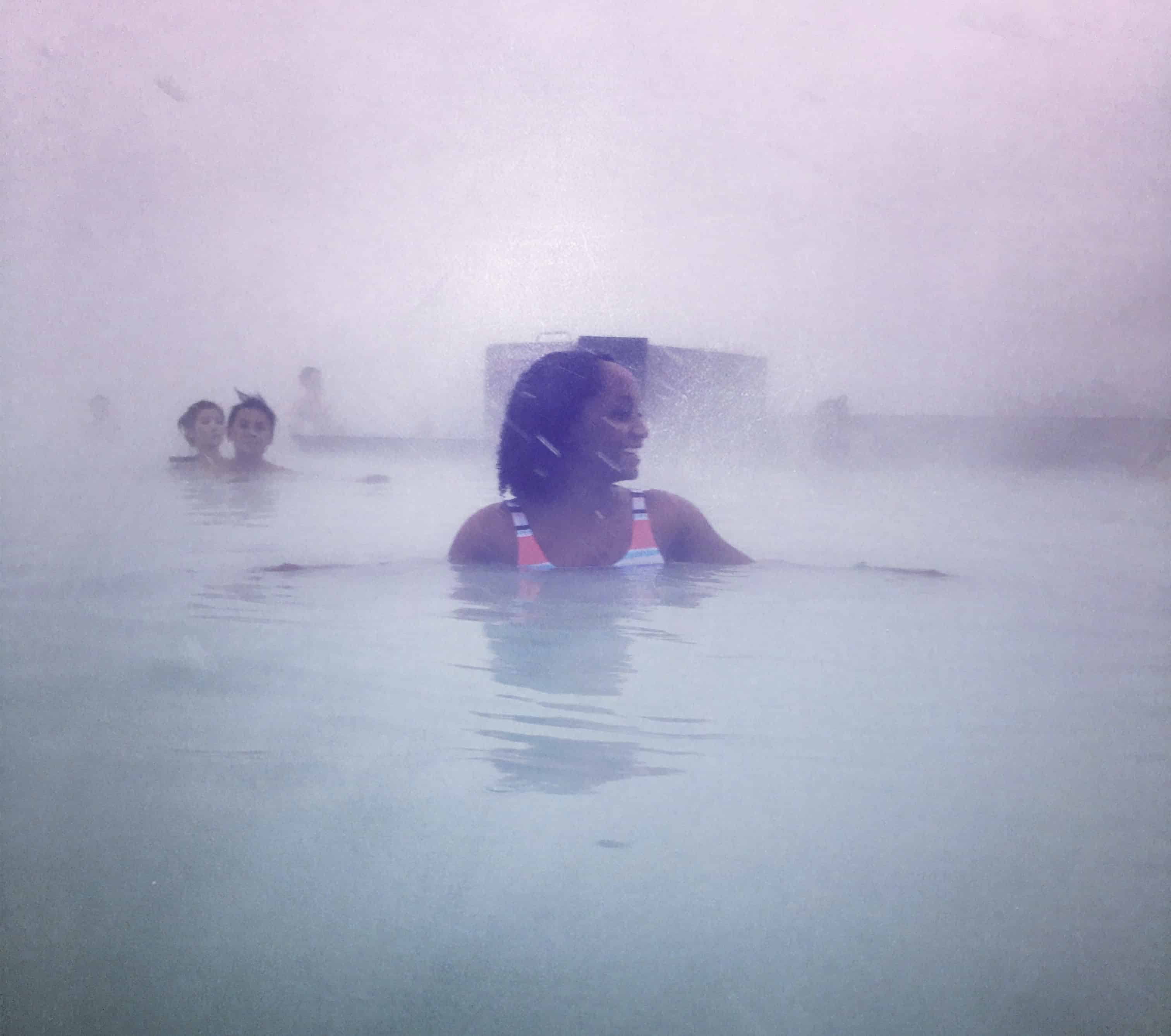
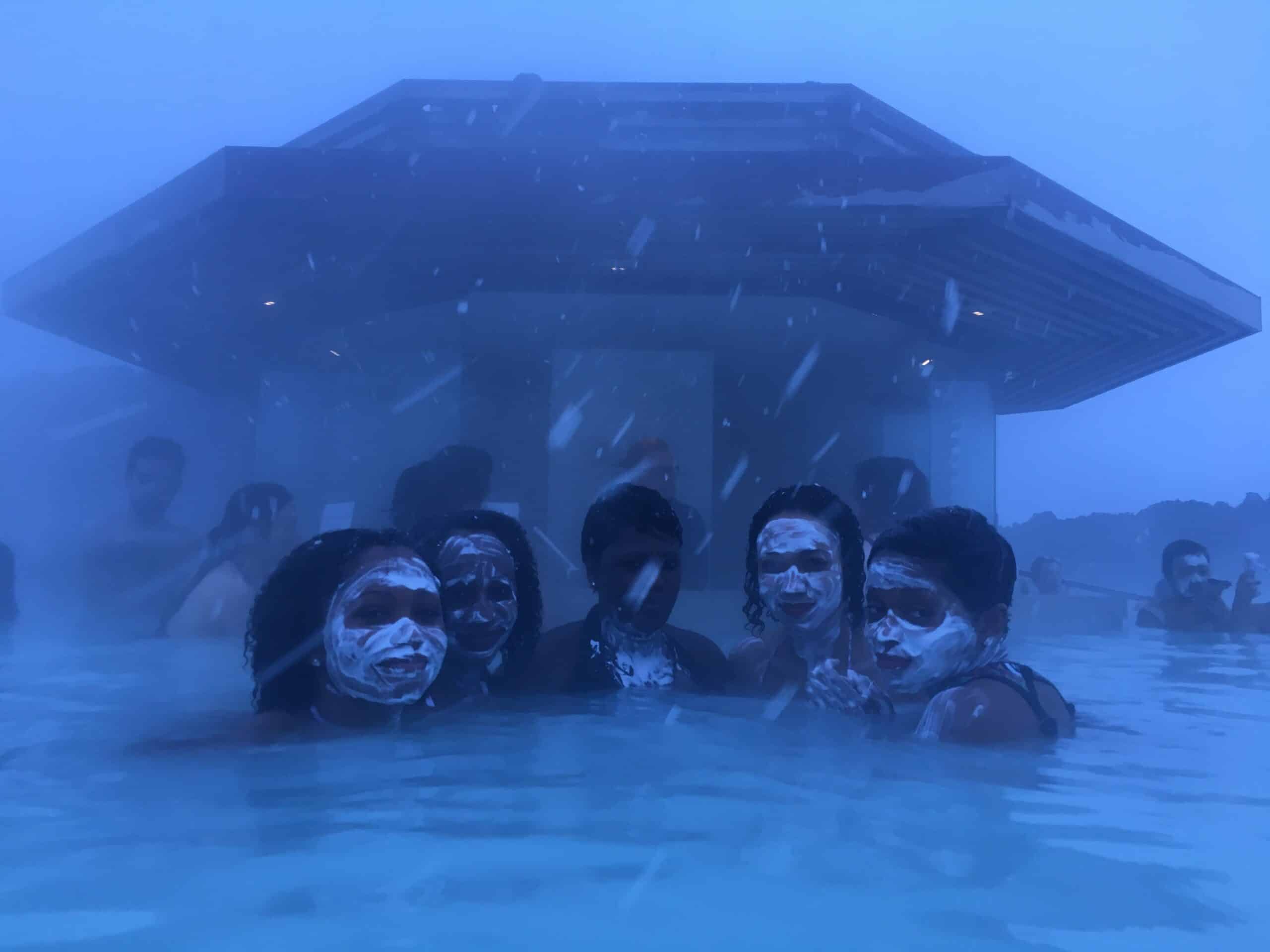
Given how tickets go here, I highly recommend booking your tickets at least a month in advance. This will provide you with the largest amount of open time slots (earlier times book up fast!) My friends and I booked the Comfort package on our visit, which we found to be just right for us, but if you are interested in either more or less amenities, you are able to upgrade while there.
This site is pretty commercial, so if you’re not interested in spending time with a lot of tourists, you can check out one of Iceland’s many other heated pools, such as Laugardalslaug or Vesturbæjarlaug. These are both more frequented by locals.
Day 4 | The Settlement Exhibition and Shopping
On your final day in Iceland, I recommend taking it a bit easy and hanging around Reykjavik before heading back home. This is your chance to go potentially go back to Laugavegur Street or back to Skólavörðustígur Street for a little souvenir shopping or taking time to visit the museums there. There are many souvenir shops, but keep in mind that the items are in Icelandic prices, which means they may be a bit high. If you’re looking for something reasonably priced and unique, check out one of the different types of salt you can find in these shops by SaltWerk. These will certainly take your cooking up a notch!
One place that my friends and I really enjoyed visiting in downtown is the Settlement Exhibition. This museum is part of the Reykjavík City Museum family, along with the Árbær Open Air Museum, the Reykjavík Museum of Photography, the Reykjavík Maritime Museum, and Viðey Island. At the Settlement Exhibition you can visit one of the first Icelandic settlements and learn more about the history of the island. You’ll learn more about what it was like for those initial Viking settlers as you explore the ruins of a 9th century longhouse. This type of house was common on the island at settlement, and featured housing for both people and animals in one long area. There are audioguides to lead you through the various exhibits, and tech is interwoven with the artifacts to make this a highly interactive experience. This is a relatively small museum, so you can visit it even if you’re limited on time.
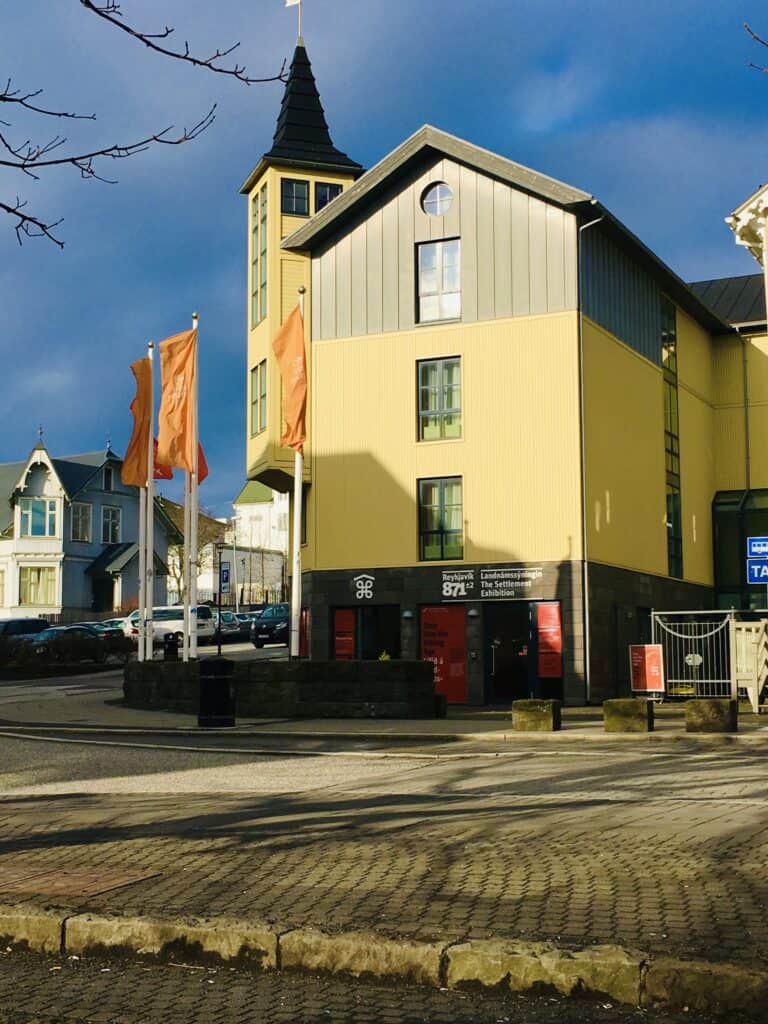
If you do have more time, I’d recommend also heading out to one of the other four sites mentioned above. In a quick synopsis, this is what you’ll find at each one:
- Árbær Open Air Museum: This museum consists of 20 buildings that form a town square, a village, and a farm. These were all built between the 1800s and early 1900s, and were preserved to remind us of Iceland’s agrarian roots. The site was formerly an established farm, and gives a nice glimpse into the Iceland of the past.
- Reykjavík Museum of Photography: This exhibit focuses on photography of Iceland, both by local and foreign photographers. It is a large exhibit featuring 6 million photographs, and the photos there currently range from 1860 to 2014.
- Maritime Museum: Located in the Old Harbor of Reykjavík, this museum originally served as a fish freezing plant. The purpose of this museum is to explore the country’s relationship with the sea. In addition to the building, there is also an old Coast Guard Vessel that you can tour as well.
- Viðey Island: This small island is a nice place to bike or visit some of the Art Works found there. These works include the Imagine Peace Tower that was conceived by Yoko Ono, and a Statue of the Virgin Mary. You can visit this island by Ferry from the Old Harbor.
4 Day Iceland Itinerary | Country Map
This map helps shed light into where all the locations mentioned in this guide can be found. As you can see, this guide primarily covers the western side of Iceland.
- Hallgrímskirkja Church
- Harpa Concert Hall
- Laugavegur Street
- Skólavörðustígur Street
- Alþingi Parliament Building
- Kerid Crater
- Gullfoss Waterfall
- Geysir Geothermal Area
- Thingvellir National Park
- Lake Hafravatn
- Hafrafell Mountain
- Settlement Museum
- Árbær Open Air Museum
- Reykjavík Museum of Photography
- Maritime Museum
- Viðey Island
- Old Harbor
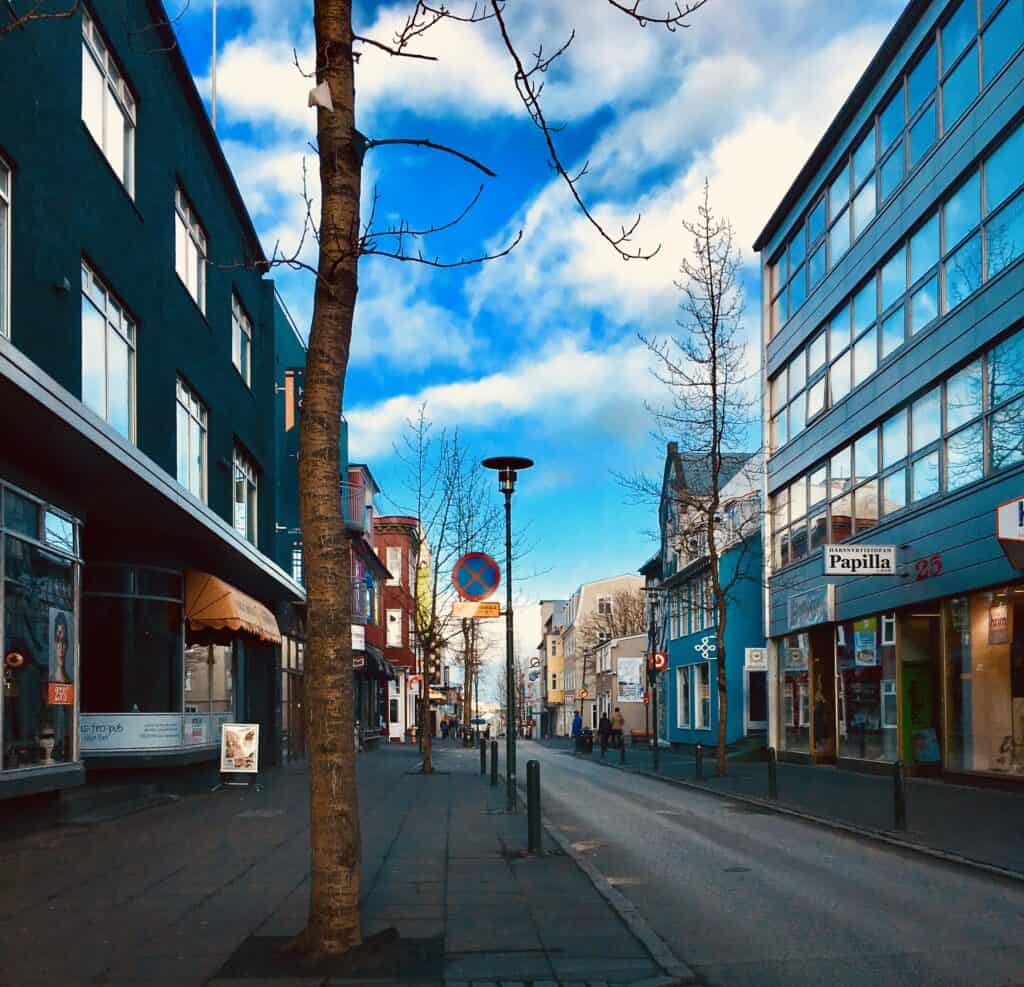
What to Do if You Have More Time in Iceland
Four days is not enough time to see the entire island, but perhaps there are other activities that may interest you over the four days. Here are some other great ideas to consider as you plan your four day itinerary.
Experiences Leaving from Reykjavík:
- Jökulsárlón Glacier Lagooon: This Lagoon is about 230 miles from the city and is a great wonder of nature. Here you can witness mini glaciers breaking off from the great glacier Breiðamerkurjökull. This is the largest glacier in Europe, and if you visit via tour, you will be able to learn about its history from your guide. The tour includes a boat cruise so that you can see the Glacier Lagoon up close. On the way back from your tour, you will stop at Seljalandsfoss waterfall and also visit Diamond Beach, which features black sand.
- Whale Watching: Iceland is known for having great whale watching opportunties, particularly for the Cetecea that frequent the area during certain time of the year. If you would like to visit during the best time of year to see whales, you should consider coming between April and September. Known that with any experience that depends on nature, it is still likely that you may not see whales during your experience. I recommend just coming with a mindset to enjoy things no matter what.
Other Experiences:
- Reynisfjara Black Sand Beach: Black sand beaches are what Iceland is known for, and are a result of the volcanic activity on the island. This beach is considered to be one of the most beautiful examples of this type of beach in Iceland, and is found along the South Coast.
- Katla Ice Cave Jeep Tour and Glacier Walk: Ice Caves are another one of those popular Icelandic attractions. In this experience you will get to explore the Icelandic wilderness. You’ll see the majestic mountains and glaciers as you travel towards the Ice Cave. You’ll be provided all the gear that you need to climb safely into the cave and explore. Inside you’ll be able to witness colorful ice as you learn about the cave’s history.
- Ring Road: If you are ready to amp up for a minimum 7-Day adventure, you should consider a trip around the well-known Ring Road. As the name suggests, this road, also known as Route 1 on maps, completes a full circle around the island. There are plenty of sites to see along the way, and if you do this, you will be able to experience most of what Iceland has to offer. This tour option gives you the opportunity to see Iceland over 4-7 days, depending on your preference and includes sites such as the South Coast of Iceland, Vestrahorn and Studlagil Canyons, Lake Mývatn, Northern Iceland, Borgarfjörður, and Snæfellsnes National Park.
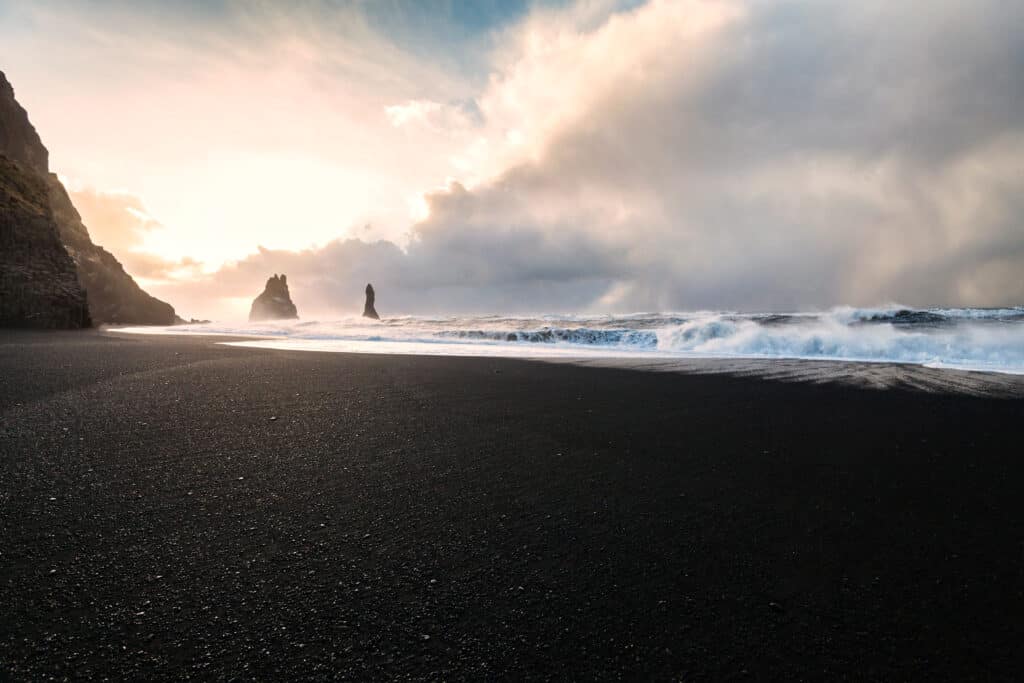
The Best 4-Day Iceland Itinerary | Final Tips
I hope you enjoyed this brief Iceland travel guide! I hope that you have found these helpful for planning your Iceland trip. Here are a few final tips and reminders to help you plan your trip:
- Iceland is generally a popular trip destination so do book all of your activities at least 1-2 months in advance to ensure that you can attend all the activities that you desire.
- Consider buying from the grocery store if you want to avoid spending high prices on food for the duration of your trip. If you do opt to buy food, also consider the fact that you’ll need to stay somewhere that provides a kitchen as well.
- Dress warmly! You’ll have a much more enjoyable time if you dress appropriately for the time of year that you are in Iceland. To that end, don’t be afraid to go outside as well – you go to Iceland for the outdoors.
- Be prepared to meet a lot of really nice and friendly people. Icelanders are direct but kind, and always helpful if you need something.
Have you been to Iceland? If so, put your tips in the comments section below!
I hope you enjoyed this brief Iceland travel guide! Have you been to Iceland? If so, put your tips in the comments section below!
#travelwandergrow
Related Posts
Looking for more European Travel Guides? Check out the posts below:

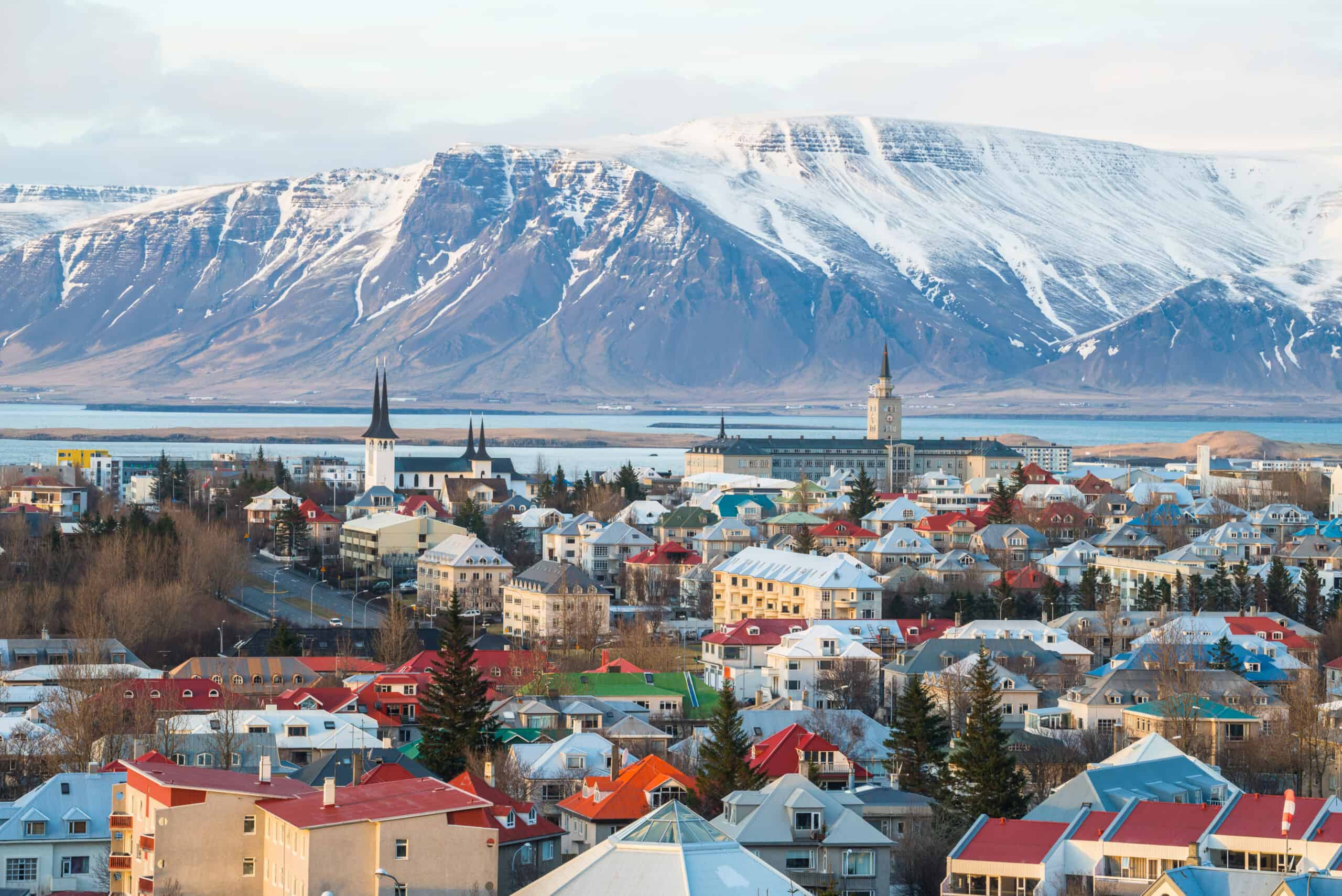
Hello, thank you for sharing your tour of Iceland. It sounds like an amazing place! Would love to see some more pictures 🙂
It is my pleasure! We’ll keep the pictures coming 🙂
What an otherworldly place, absolutely stunning! I would love to be there myself someday. And thanks for the tip with the free walking tour, I will definitely keep that in mind for my next trip!
https://www.makeandmess.com/
You are very welcome Michelle! I hope that you are able to visit soon 🙂
Wow what stunning pictures. Though I am not a fan of the cold, your blog is a great way to ‘experience’ some of the beauty of Iceland.
That’s what I’m here for Wiebren! I’m not really a fan of the cold either, but Iceland was totally worth it.
WOW. your vacation looks soooo wonderful. I love your pictures!
Thank you so much Julie!
To see the northern lights in Iceland is on our list. Thank you for the tips.
Of course, Missy! Hope you can visit soon 🙂
Cheers for this. We’re not big on cold but we may have to make an exception for Iceland
I felt the same exact way, Sharyn!
Wow! Sounds like you had an amazing trip! I love your pictures and have wanted to visit Iceland since I was a little girl! Thank you so much for sharing!
It’s my pleasure, Robin!
Great post! Iceland is somewhere I’ve been looking at visiting especially in winter as it is actually not as cold there in winter than it is where I live! Crazy, right? Go to Iceland to warm up! LOL Anyway, I’ve been thinking of either a stopover trip, or a short trip like yours. Iceland Air has a neat feature that you can stopover for up to 5 days en route to another destination in Iceland for no extra flight fees. I thought that might be a great way to see more than one place so your article is awesome in that it covers a short amount of time there! I am wondering, however, what do you think of Iceland with kids? Is this a good destination?
Hi Jeannie – I do think that Iceland is a great place to travel with kids. There are plenty of fun museums to check out and I am sure they would love the beautiful nature as well :). The only things that may not work for them (depending on size) is the ATV tour and the Blue Lagoon, but everything else is very family friendly :).
This is amazing!! Iceland is on my short list and 4 days would be perfect! We are dying to see the northern lights and Iceland will be the ideal location to see them!
allison @lookslikehappy.com
Hi Allison! If you do decide to head over, let me know if you have questions as you plan :).
Great review of Iceland! I went this past June so it was interesting to read about Iceland in the winter as opposed to the summer. I would definitely like to go back in the winter to see the Northern Lights but maybe only for two days because I hate the cold!
I feel you Jennifer! The cold can be a little daunting, but it is a little warmer than many places in the US during the winter, if that helps haha!
Glad I came across your site and looked into your Iceland trip, my brothers and sister and I are planning for my parents to go see the Northern Lights and we were not sure what else they could do out there LOL. We have read a couple other blogs on Iceland but nothing as specific as yours giving us pricing info for restaurants so that was awesome, gives us another idea of how much more we should be saving.
Thank you!
So glad you found this post! There is definitely a lot of them to do besides the Northern Lights, which are still awesome btw. If you need some additional pointers as you plan your trip, just let me know.